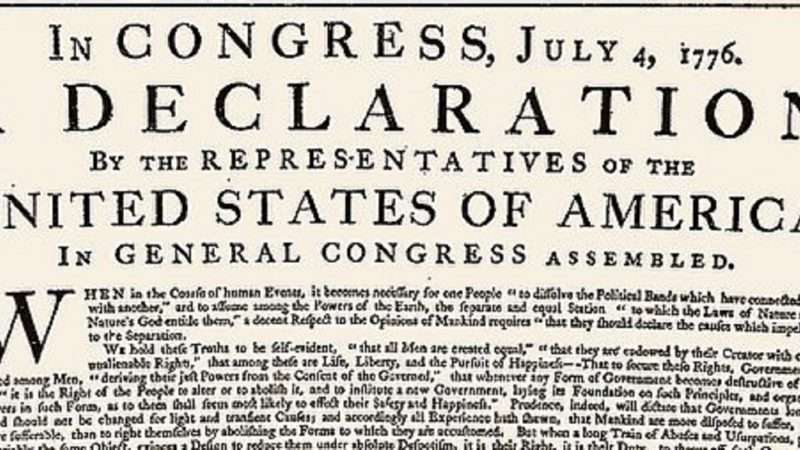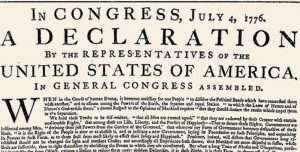Last week, two justices dissented from the denial of certiorari in Eychaner v. Chicago, which asked the Court to reconsider Kelo v. New London. (Justice Kavanaugh voted to grant, but did not join the dissent.) Ilya Somin commented on the cert denial and Josh Blackman speculated on why the cert petition did not attract more votes from the conservative justices.
Kelo v. New London is one of the most reviled Supreme Court decisions of the past twenty years. It prompted a substantial backlash, spurred eminent domain reform throughout the nation, and inspired a movie. As a policy matter, it is abominable that the government may take someone’s home to facilitate economic development plans of corporate interests, made all the more so here because the promised economic development never even occurred.
There is broad agreement (at least on the political Right) that such uses of eminent domain are bad. But does that mean the use of eminent domain for economic development is unconstitutional? I am unconvinced.
The standard argument against Kelo is that the Takings Clause of the Fifth Amendment limits the use of eminent domain to “public use,” and that economic development of the sort at issue in Kelo does not constitute “public use,” in part because New London gave the property in question to private economic interests. The key element of this argument is that the Fifth Amendment imposes a “public use” limitation on eminent domain. But is this premise correct?
To answer this question, it is useful to start with the text of the Fifth Amendment. Here’s the whole thing:
No person shall be held to answer for a capital, or otherwise infamous crime, unless on a presentment or indictment of a grand jury, except in cases arising in the land or naval forces, or in the militia, when in actual service in time of war or public danger; nor shall any person be subject for the same offense to be twice put in jeopardy of life or limb; nor shall be compelled in any criminal case to be a witness against himself, nor be deprived of life, liberty, or property, without due process of law; nor shall private property be taken for public use, without just compensation.
Note, for starters that there is not one clause concerning the taking of property, but two (both highlighted above). The Fifth Amendment bars all takings of property “without due process of law.” It then imposes an additional requirement, “just compensation,” on those takings that are “for public use.”
The first thing to note is that in the Takings Clause itself, “public use” is not written as a limitation. The text does not read “nor shall private property be taken other than for public use.” Rather it identifies a type of taking—those “for public use”—that require compensation. “Public use” is used to differentiate a subset of takings. It is not written as a requirement or limitation.
Read in the context of the full amendment, this makes sense, for there are all sorts of takings or property for which compensation is not required, including taxes, fines, and seizures. Those takings require due process, but do not require “just compensation.” It is when property is taken for a public purposes (as opposed to as a punishment or as an exaction) that compensation is required. To restate: The text requires Due Process for all takings of property, and then requires compensation for the subset of takings that are “for public use.” Like it or not (and I most definitely do not) this is the most straight-forward reading of the constitutional text, and there is little historical or other evidence to the contrary.
If one goes back and reads Justice Thomas’ Kelo dissent, one finds lots of citations to sources extolling the importance of private property, but one finds a conspicuous lack of sources that contest this understanding of the Fifth Amendment’s text. Indeed, the ratification debates contain precious little on the Takings Clause, nor do other Founding Era sources. One can find Founding Era complaints about naked transfers of property, as in Justice Chase’s opinion in Calder v. Bull, but the alleged violation there is potentially one of Due Process, not the “public use” requirement.
One can also imagine arguments that a given taking of property is not legislatively or constitutionally authorized, such as being beyond the enumerated powers of the federal government (which, until passage of the Fourteenth Amendment, is all the Fifth Amendment constrained), but this is a different argument from the claim that the Takings Clause imposes a “public use” limitation. It may well be that the federal government has little ability to transfer private property from one person to another for the purposes of economic development, but this would have been due to the constrained nature of the powers enumerated in Article I, section 8, not any constraint imposed by the Takings Clause.
An obvious objection is that, whatever the Fifth Amendment meant when ratified, our understanding of the Takings Clause, and the extent to which it constrains state governments, was transformed by the Fourteenth Amendment. Thus, just as 1868 informs how the Second Amendment’s right to keep and bear arms applies to the states more than 1791, so too 1868 tells us more about how the Takings Clause applies to state and local governments than 1791. This makes sense, and I am open to the argument that protection of private property rights incorporated against the states through the 14th Amendment is more capacious than that provided by the Fifth Amendment’s text (as Ilya has argued), but I have yet to be convinced.
Unlike the federal government, state governments have a residual police power which has long included a robust power of eminent domain, and such powers were often used to promote economic development, such as when states would authorize grist mills to flood upstream lands. The Takings Clause, as incorporated against the states through the Fourteenth, clearly requires compensation for such takings. Yet the primary constraints on the abuse of such power for impermissible purposes comes not from the Fifth Amendment, but from limitations in state constitutions and the political process (which, thankfully, was energized by Kelo).
That the Takings Clause of the Fifth Amendment does not impose a “public use” requirement on eminent domain does not mean that such limitations cannot be found under state constitutions. State-level protections of property often use different language, and were adopted under different circumstances. Accordingly, there is nothing inherently suspect about state supreme court decisions providing more robust protections for private property, as occurred here in Ohio. Whether these state-level decisions are correct prompts a different inquiry. It also may be the case that some sorts of naked A-to-B property transfers violate other constitutional requirements, as Justice Kennedy suggested in his Kelo concurrence, but this (again) is a separate question from whether the Fifth Amendment’s Takings Clause imposes any such limitation.
In conclusion, I will return to where this post started. Many originalists seem to take it as an article of faith that the Takings Clause imposes a public use requirement on exercises of eminent domain. Yet neither the text nor the available historical evidence provides much support for this claim. As a believer in robust protections for private property, I wish this were not so. Alas, not every injustice is unconstitutional.
UPDATE: My co-blogger Ilya Somin disagrees.
from Latest – Reason.com https://ift.tt/3xpzaGg
via IFTTT


